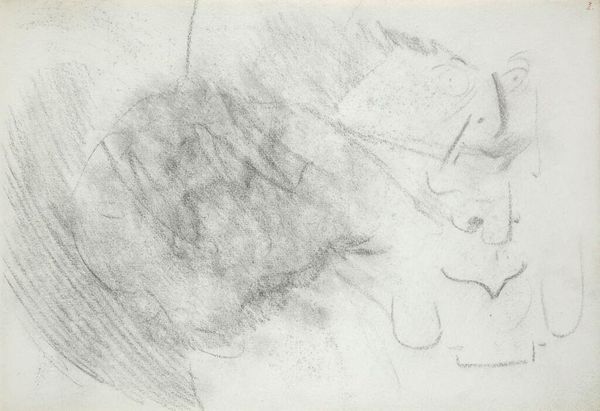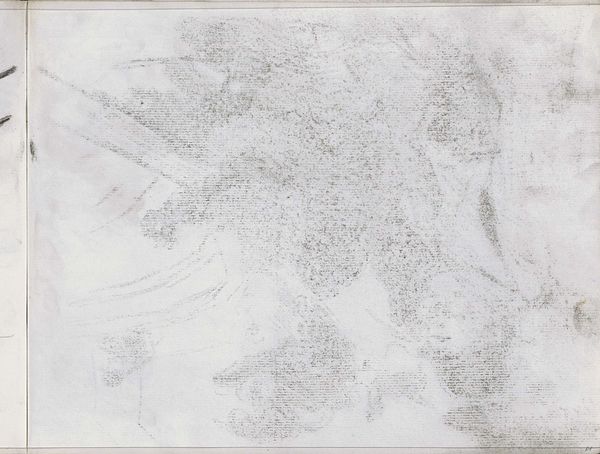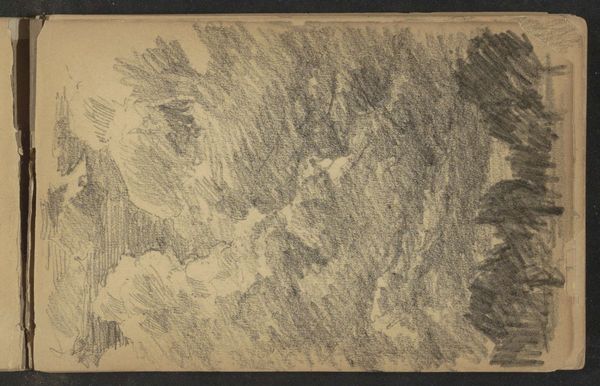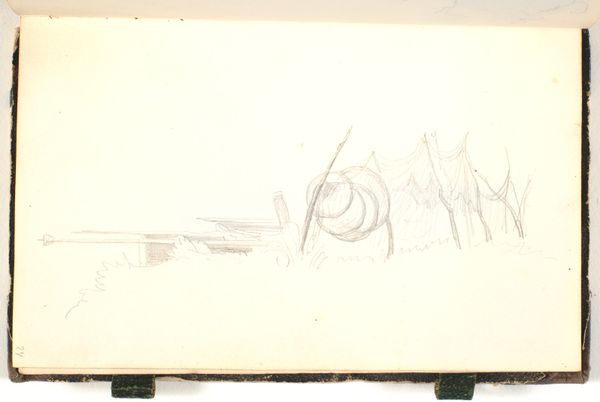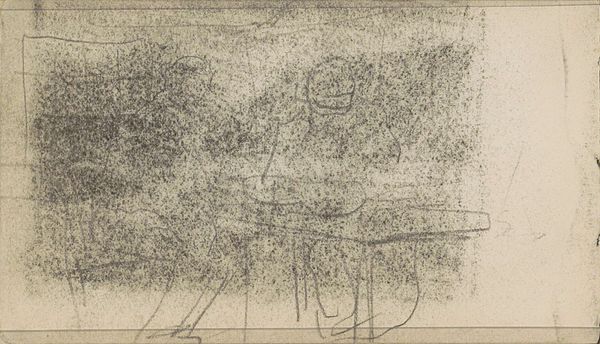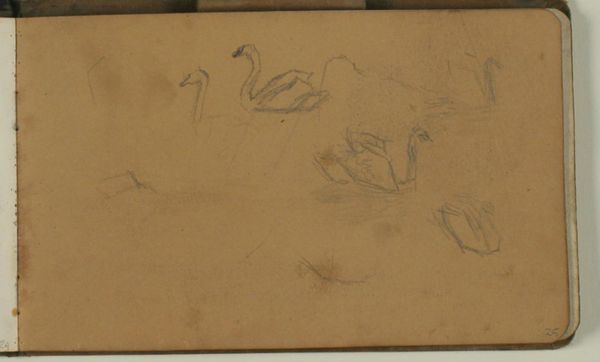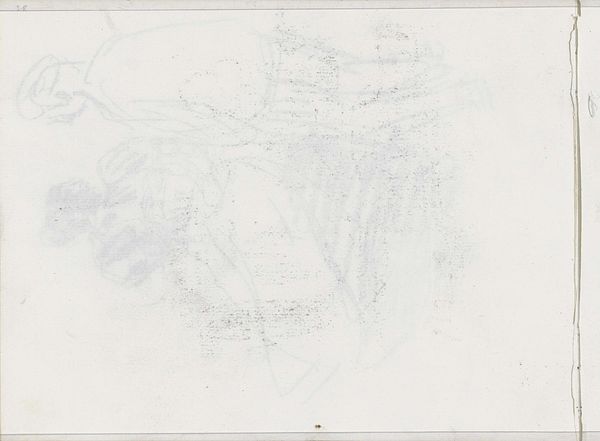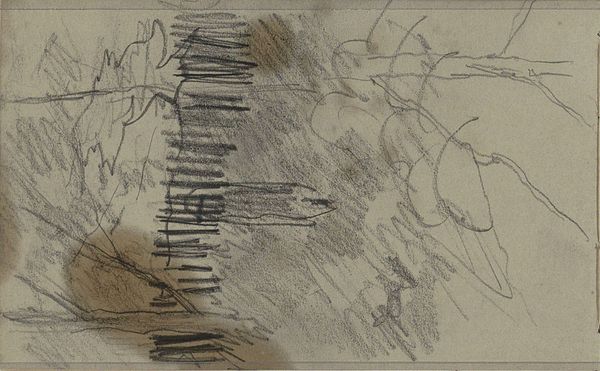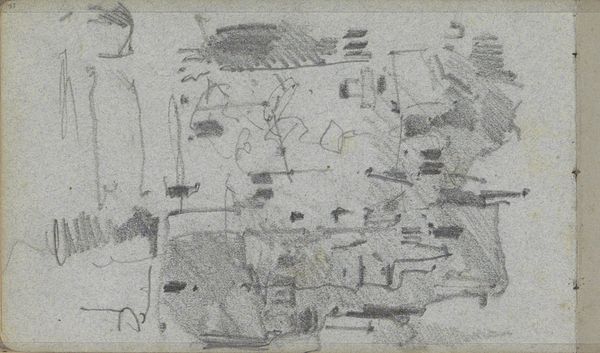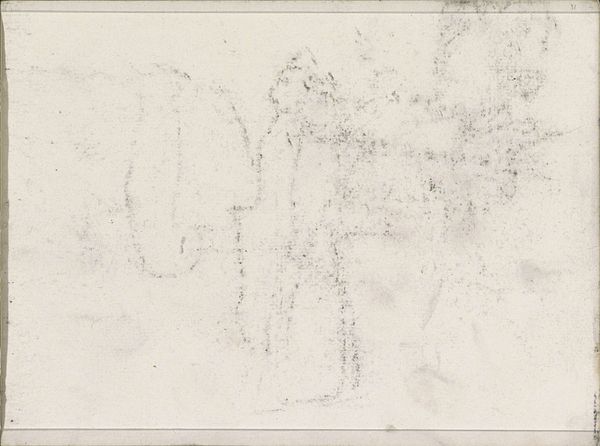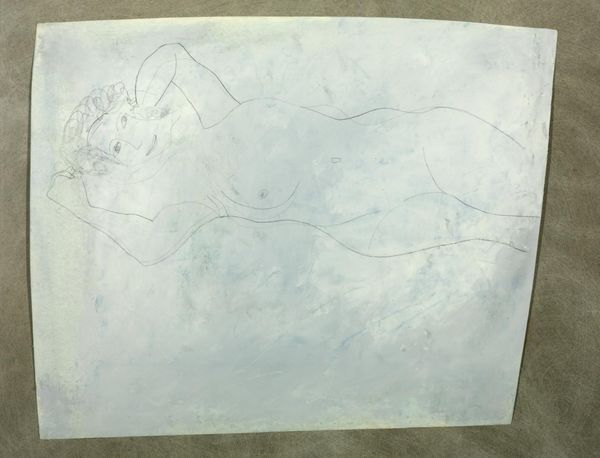
drawing, graphite, charcoal
#
drawing
#
dutch-golden-age
#
landscape
#
charcoal drawing
#
graphite
#
charcoal
#
realism
Copyright: Rijks Museum: Open Domain
Curator: This graphite and charcoal drawing is titled "Studie, mogelijk een landschap," or "Study, possibly a landscape," attributed to Jozef Israëls, dating between 1834 and 1911. It currently resides here at the Rijksmuseum. Editor: There’s an immediate softness to it, a blurred ethereal quality. The tonality, muted and subtle, feels almost like a half-remembered dreamscape. I'm drawn to its gestural freedom. Curator: Precisely. Note how the artist’s hand is clearly present in the work, uninhibited by constraints of strict realism. The medium is crucial. The texture of charcoal and graphite against the paper creates this almost atmospheric haze that softens any sharp lines. Editor: Considering the potential landscape, I'm curious about the source and process. What kind of paper was he using? Was it handmade, and how did its texture influence the way he worked with the charcoal and graphite? Did Israëls make multiple studies like this one? Where were these made, and what significance does it have knowing the actual context? Curator: It pushes past mere representation and heads straight toward impression, a raw immediacy. It becomes less about *what* we're seeing, perhaps a field or shore, and more about the *feeling* of vast openness, about light filtering through mist. The materiality enhances this. Editor: I agree. While its ambiguous presentation initially veils details, the materiality of Israëls artistic implements enhances appreciation for his skills and working methods, adding dimensions of cultural understanding that enrich the aesthetic significance beyond traditional approaches that focus primarily on appearance or symbolism. Curator: Perhaps this raw quality allows us to bypass preconceived notions of landscape and access the artist’s initial, almost unconscious reaction to the scene. It captures an emotional essence. Editor: This piece moves me beyond an art historical standpoint, fostering deeper reflection on art’s tangible components as part of social exchange through material processes rather than symbolism or beauty itself, offering a perspective more comprehensive and honest. Curator: Yes, in the end it is the simplicity of the mediums married to masterful use of composition that lends itself to its dreamlike charm. Editor: Definitely. Seeing the artwork examined under such close, critical terms gives added layers of meaning that can allow its context of creation, use of resources, and cultural origins all within it, providing me more enriched insight overall.
Comments
No comments
Be the first to comment and join the conversation on the ultimate creative platform.
